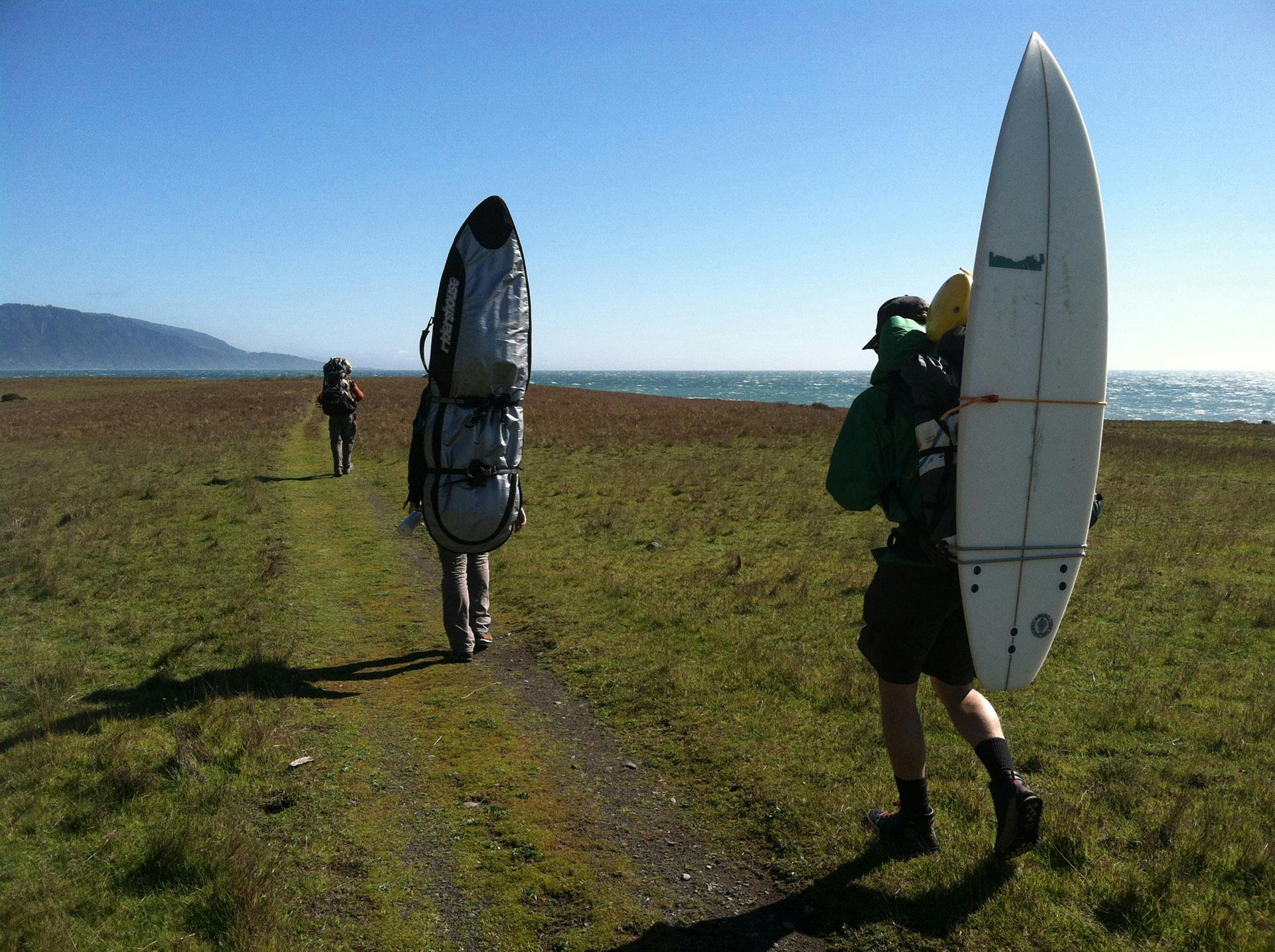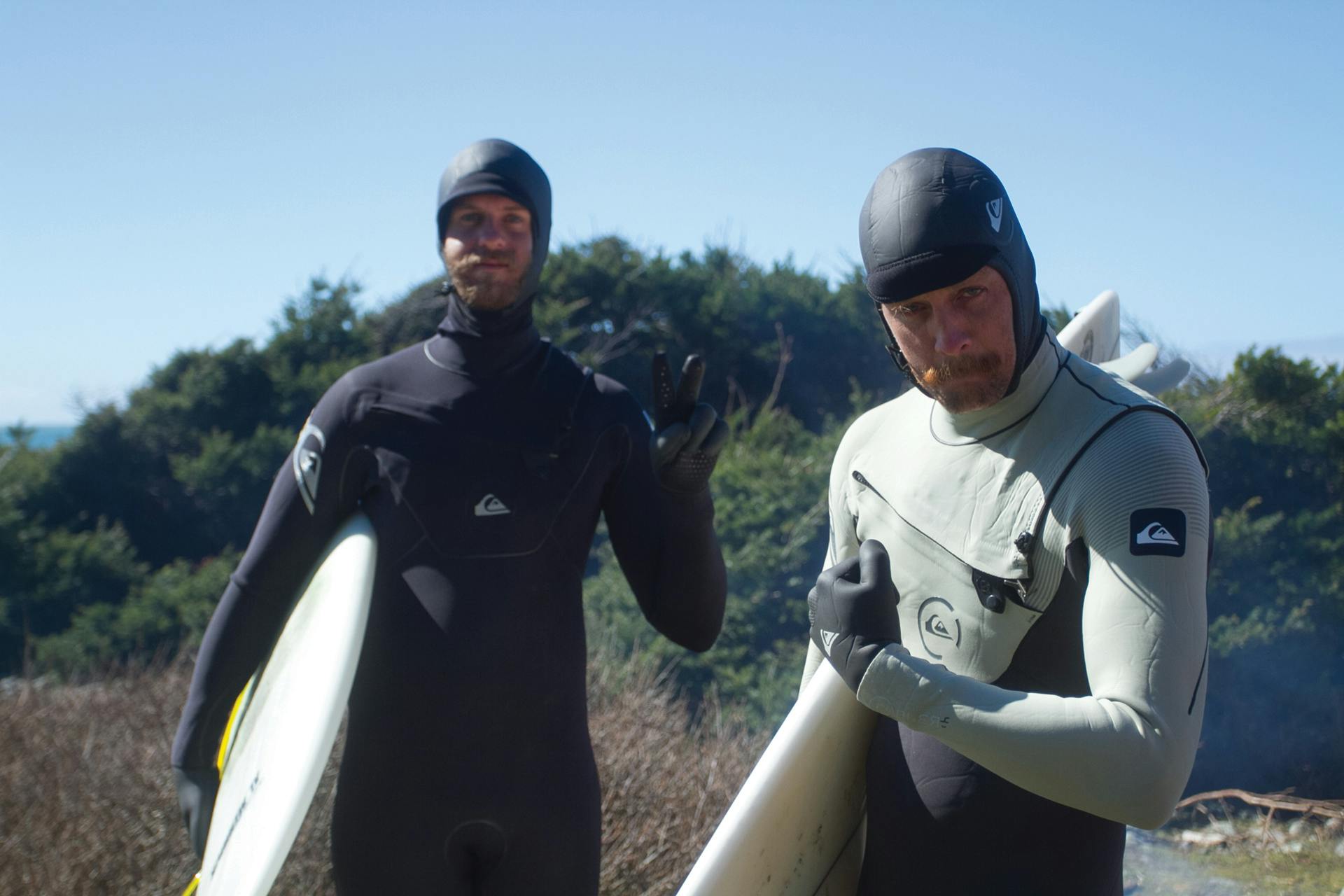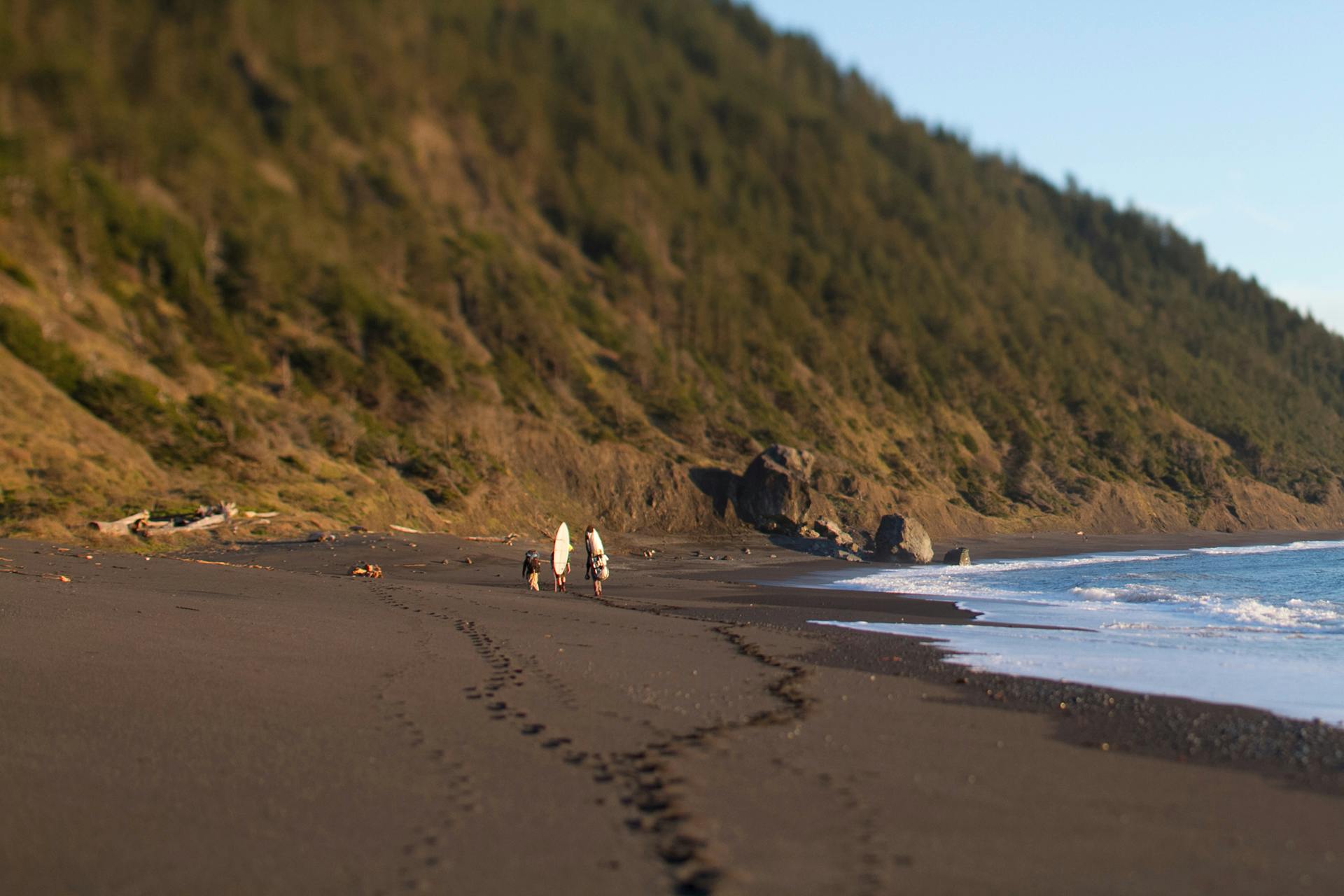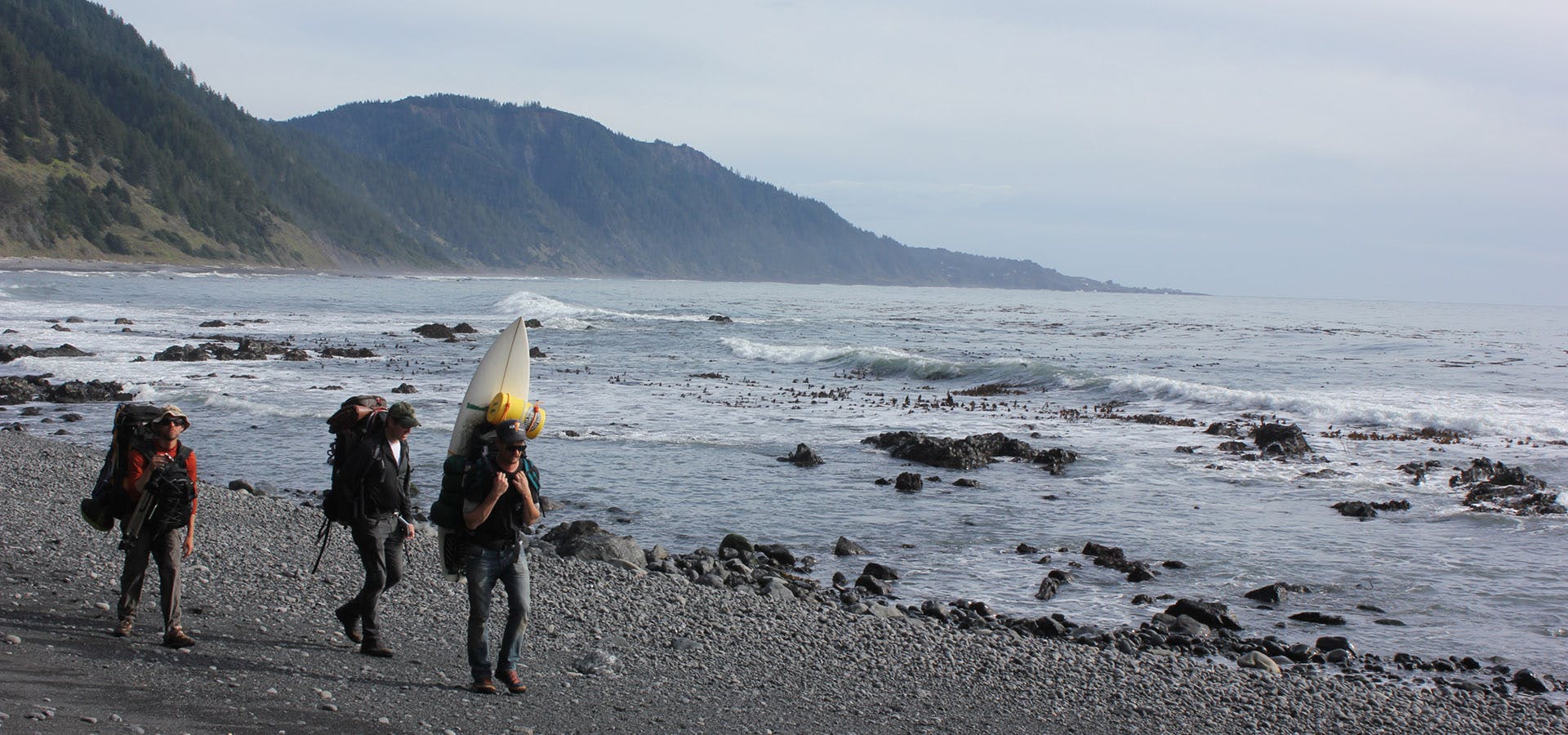
The trance was suddenly broken when I saw a familiar face across the playground: another dad and son, park regulars with whom we recently became acquainted. Naturally we strike up the cordial dad dialogue, like “Yo, where you been?” and “What’s been goin’ on? How’s the wife? How are the kids? How’s work?” All questions that stay very much within a life rhythm that is what we know and are comfortable with. And consequently all the answers are ones that you would’ve guessed before even asking.
But then the fellow park dad asked, “Got any trips planned?” I was slightly caught off-guard. I don’t have a canned answer for this one. So I paused, thought, and said, “You know what? Yes! Yes, I do have a trip planned.” It was a quick guys getaway up to Northern California to Marin, just outside San Francisco. Link up with some old friends, maybe surf, maybe mountain bike, maybe just go where the wind blows. Park dad’s eyes lit up.
“Surf up north?”
“Yeah,” I said. “Possibly.”
“Well if you’re going that far up you might as well look into going a little further and surfing the Lost Coast of California.”

It was like a 2×4 to the side of the face. “The lost coast of what?” I asked myself. I’ve surfed my entire life and have never heard of such a place.
The Lost Coast of California is a stretch of coastline around the Humboldt/Mendocino area that is only accessible by foot. It is home to a few point breaks that are very good with the right conditions and swell direction … and more importantly, not crowded. A total anomaly these days.
Just like that, my life rhythm was disrupted, and so many new questions began to percolate. How did you hear about this place? What was it like? Did you drive? Can you fly? Where do you stay? Are the waves really that good? Are there sharks? Has anyone died?
And oddly enough, all his answers continued to pique my interest and had me inquiring further. That was it. The tipping point. My current life rhythm and comfort zone were instantaneously disrupted, and the obsession began. I was going to the Lost Coast of California.

It was February, and I had just landed in San Francisco to meet up with the crew of guys who had committed to seeing this stretch of coastline together. All part of a very close-knit group who, self-admittedly, has a screw loose somewhere. But that’s why we enjoy each other so much.
Anticipation levels were at an all-time high, and after months of research, planning, email chains and convincing our wives that we were somehow serving the greater good, the time had finally come. We were doing it … out to explore what was total uncharted territory for us.
We had all the necessities that would get us through a 10-mile hike in and an overnight camp: surf gear, food, water. And if anything went wrong, it would be okay because we had beer.
We loaded everything into our buddy’s ’91 Westfalia, and off we went—embarking on a six-hour drive further up the coast, even though we were leaving three hours behind schedule. But who cares? We had thoroughly disrupted our typical life rhythms, and for now it felt good.
After more like a seven-hour drive, we arrived at our final destination: a sleepy little beach town on what feels like the middle of Mars. A few small homes were perched on the cliff with a small inn where we figured we should go poke around and possibly gather some valuable local knowledge for the trek ahead.
We were greeted by an old salty dog at the front desk who looked at us like we were a bunch of city kids filled with overly zealous hopes and dreams—which, looking back, we were. We inquired about the hike, and he looked at us with disgust.

Apparently the entire hike consists largely of walking seven or so miles north in soft sand up the coast to where the cliffs meet the rocky coastline and then proceeding to rock-hop for about another three miles before the incoming tide sweeps you out to sea. The salty dog claimed they suffer about three casualties every year for those who don’t time the tides correctly.
Was he attempting to deter us? Because it was working. But we were determined. We knew at the end of the journey there were waves—good waves, with no one around, and that was enough for us to press forward.
Plus, if anything went wrong we would be fine. We had beer. So the packs went on, boots got tied up and we were off.
Mile 1 … This is one of the most beautiful places I’ve ever seen.
Mile 2 … Stream crossings prove tricky with the heavy packs, but out of it comes a newfound confidence once complete.
Mile 3 … Walking in sand with this stuff on my back is beginning to test my good cheer.
Mile 4 … Should we stop for a beer break?
Mile 5 … We are collectively in the zone. Feet hurt, back hurts, but we press forward. We know there is a looming incoming tide, and time is our enemy.
Mile 6 … Shit, maybe we should break up the trek over two days.
Mile 7 … Break time. Need food, need water.
Miles 8, 9, 10 … A true test of one’s mental and physical limits. All of us are in good physical condition, but we never anticipated the weight of our packs to be as heavy as they were. Combined with deep sand hiking and toenails starting to fall off, things were getting dicey.
Then we were met on our right by a 100-foot cliff with nowhere to go. To our left, the Pacific Ocean. Normally a welcoming sight, but with only a 20-foot-wide asteroid field as our path to the promised land, that was quickly disappearing with the incoming tide.
We had to move fast—a true test of agility, because at this point, this far in, a rolled or broken ankle would have been catastrophic. We now found ourselves in a very different rhythm than that of a month ago in the park on a Saturday morning.
This was something different—part of which is a little unnerving … but also feeding something inside very primal. In a sadistic sort of way, it felt good.

Squeaking by the incoming tide, we arrived at our final destination. A very large, flat piece of greenery overlooking a right-hand point break that was hosting a diminishing swell, but enough to enjoy … without a soul in sight except for the friends I had come with and the deer walking the beach.
The water was cold, and the kelp was thick. If this stretch of coast was known to have bears, deer and coyotes on land, one can’t help but think what could be under the water. You try not to think about it, but it seems inevitable there is a very large fish somewhere close by.
Anxiety builds, and then the first set shows out the back. You paddle toward the horizon, ignoring all your brain’s natural cues telling you to paddle the opposite direction toward land and safety. Senses heightened, aware, present and never more alive.
I realized months after: It wasn’t about waves. Rather it was about the process, the people and finding new life rhythms that help us keep our lives on an even keel, ensuring we excel at all facets of life.
That next Saturday morning—back at the park, pushing my son on the swings—it was like the first time. Time slowed, I became aware, present. And once again, I had never felt more alive.









